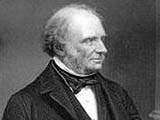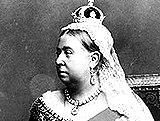| ||||||||||||||||||||||||||||||||||||||||||||||||||||||||||||||||||||||||||||||||||||||||||||||||||||||||
|
First entered Parliament: 18 August 1813 Age he became PM: 53 years, 316 days and 73 years, 72 days Maiden1 speech: 12 May 1814 speaking against the enforced union of Norway with Sweden Total time as PM: Six years, 11 days Died: 28 May 1878 at Richmond Park, Surrey Facts and figuresNicknames: "Finality Jack2" and "The Widow's Mite3" Education: Westminster School and University of Edinburgh Family: Russell was the third of three sons. He also had four half-brothers from his father's second marriage. He was married twice - to Lady Adelaide Ribblesdale and then to Lady Elliot-Murray-Kynynmound - and had three sons and three daughters Interests: Reading, writing, travel BiographyWeak leader Born premature4 and always small in stature5, Lord John Russell served twice as prime minister. Neither period of office proved smooth, and his achievements were limited by weak leadership and difficult circumstances. The third son of the Duke of Bedford, Lord Russell was an instinctive6 reformer. He came to Parliamentary attention for helping7 to write the 1832 Reform Bill, which increased the number of people eligible8 to vote. He served as Leader of the Commons, and later as Home Secretary and Colonial Secretary under Melbourne. He went on to lead the opposition9 to Peel's government, but supported Peel in repealing10 the Corn Laws. And in 1846, after Peel resigned, Russell became leader himself. Due to party disunity and his own ineffectual leadership, Russell was unable to get passed many of the measures he wanted. His government also had to face problems including poor trade, high unemployment and the Irish potato famine. Liberalising trade As PM Russell did manage to liberalise trade and limited women's working hours. The Education Act of 1847 improved pay for teachers and granted money to non-conformist schools. The Australian Colonies Act of 1850 gave representative government to New South Wales. Russell also achieved improvements to the Poor Law.
Russell then served briefly11 as Foreign Secretary under Lord of Aberdeen, and then later under Palmerston, having made up his differences with him. In 1861 he was created Earl Russell. When Palmerston suddenly died in 1865, Russell formed a second government; his advanced age was outweighed12 by Queen Victoria's trust in him. Russell immediately tried to introduce a further Reform Bill to extend the political franchise13, but his Cabinet failed to support him, and he resigned with little regret the next year. Quote unquote
Did you know?Among Russell's descendants was the philosopher Bertrand Russell, his grandson. First wife - Adelaide RibblesdaleLittle is known about Russell's first wife, who had been married before. Fifteen years his junior, she bore him two children but died when just 31. Second wife - Frances Elliot-Murray-KynynmoundTwo years later Russell married again to a woman who was 23 years his junior. She took on responsibility of her stepchildren and gave birth to four children herself. Frances was as shy as her husband and they were never happier than when at home together as a couple. 点击  收听单词发音 收听单词发音
|
||||||||||||||||||||||||||||||||||||||||||||||||||||||||||||||||||||||||||||||||||||||||||||||||||||||||
- 发表评论
-
- 最新评论 进入详细评论页>>

 Born: 18 August 1792 at Hertford Street, Mayfair, London
Born: 18 August 1792 at Hertford Street, Mayfair, London He was forced to resign by his independent-minded Foreign Secretary Lord Palmerston.
He was forced to resign by his independent-minded Foreign Secretary Lord Palmerston. 

